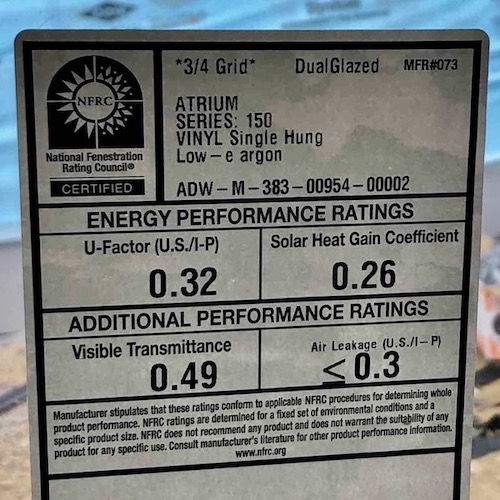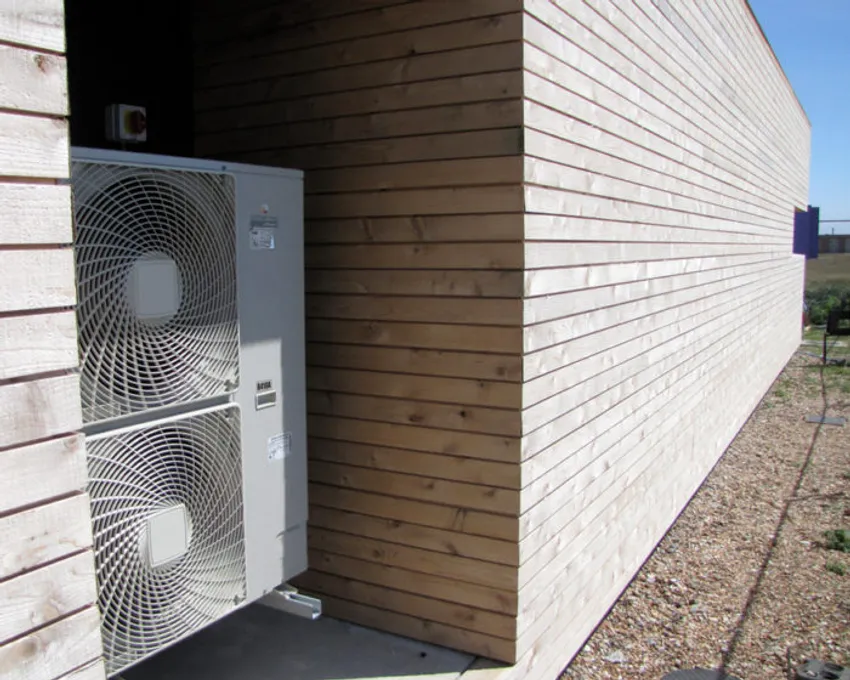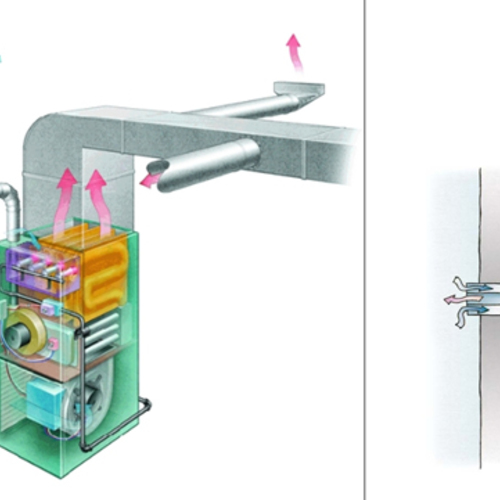
Sometimes a house just needs a lot more air conditioning than building officials want you to put in, right? It’s better to be safe than sorry, so having extra heating or cooling capacity can be a good thing. Today I’m going to show you how to cheat on a Manual J load calculation, which gives you the heating and cooling loads for a house.*
I’ve done quite a few load calculations since my first one in 2004. I’ve looked at a whole lot more in the process of doing quality assurance for energy efficiency and green building programs. I’ve also done many presentations and training classes on this topic. And HVAC design is what we do every day at Energy Vanguard.
Plus, I’ll divulge a little secret here. I got really good at cheating back in 8th grade. But what I’m going to share with you here isn’t about putting together a cheat sheet that you hide under your leg as I did for that health test. I’m going to show you the tried-and-true tricks used by the pros!
Cheating like a pro
The first thing to know is that some Manual J inputs have a bigger effect than others. Those are the ones to manipulate because a little cheating can go a long way. Here are my top parameters to take your swindling to the next level.
Windows. Even a good window is significantly worse for heat transfer than a mediocre wall. A window with a U-value of 0.25 has an R-value of 4. That’s pretty good . . . for a window. But the surrounding wall will have at least R-13 insulation in it. And there are five good ways to cheat here:
- Area – Double the window area, and both the heating and cooling loads will jump.
- U-value – Got a house with U-0.25 windows? Enter them as 1.25, and watch those load blow up. (Higher numbers mean higher loads.)
- Solar Heat Gain Coefficient (SHGC) – Same as U-value. Increase those SHGC-0.2 windows to 1.0. This increases your sensible cooling loads only, but who’s complaining.
- Overhangs – If the windows have overhangs, “forget” to enter them and your cooling load goes up.
- Orientation – One way to get extra load here is click the button in your software for worst-case orientation. Another is simply to put all your windows on the west side of the house.

Infiltration rate. Airtight homes have lower heating loads because they lose less heat through air leakage. They have lower cooling loads on both the sensible and latent parts because they bring in less outdoor air, which adds latent load in humid climates. Bump those numbers up, and the heating and cooling loads both increase. If the builder says the house will be at 3 air changes per hour at 50 Pascals (ACH50), try 8 ACH50. Those numbers look similar, and the building official probably won’t catch your deception.
Ducts. This is a good one because it’s like windows: You can change them in more than one way to get higher loads.
- Duct leakage – Many codes require testing for this, but new homes don’t get a duct leakage test before you have to do the Manual J, right? Crank up that leakage for more load.
- Location – This is an easy one—and sneaky, too. Just enter the duct location as unconditioned attic.
- Insulation – Less insulation on the ducts means higher loads. Make them uninsulated for maximum effect.
- Area – Bigger ducts have more surface area for more heat loss or heat gain. Double or triple the supply and return duct area.
Occupants. This one can help you a lot, but only on the cooling load. Each occupant adds 230 BTU per hour of sensible load and another 200 BTU per hour of latent load. Need another two tons of cooling capacity on your report? Just put in 56 occupants. Boom. You’re there.
Appliances. This is a really easy one. Just add a couple thousand BTU per hour of appliance loads to six rooms in the house, and you’ve added a ton of sensible cooling load.
Design temperatures. This is the first place most people think to cheat on the loads. Drop that winter (99%) design temperature from 15 °F to -15 °F or the summer (1%) design temperature from 92 °F to 99 °F, and the loads increase.
Those are some of the easiest places to jack up your Manual J heating and cooling loads, but there are plenty more. Any parameter can be hacked to give you those higher loads you deserve.
Is it right?
Chances are, you can submit fraudulent Manual J reports to a great many building departments in the U.S. and get away with it. Building officials have responsibility for a lot of facets of the construction process, and they know more about some areas than others. Reading over load calculation reports is one of the weakest areas of most building officials. So, you’ve got that going for you.
But is cheating on these reports OK? Here are some of the consequences of boosting the loads without justification:
- The larger equipment will cost more.
- The airflow will be higher, and you’ll have more ductwork, bigger ducts, and more vents in the rooms as a result.
- If you don’t expand the duct system, the duct resistance (as indicated by total external static pressure) will be higher.
- The system will probably be noisier if the duct system isn’t designed appropriately.
- The oversized equipment will short cycle. The main problem with that is that people in the house will be less comfortable.
So, yeah, I can show you how to cheat on a Manual J load calculation. But guess who else finds this article when they go Googling: building officials. And actually, they’re the ones I’m writing this for. The numbers I used in my examples above are wildly exaggerated. If someone submits a Manual J with 56 occupants, for example, that would be easy to spot. But if they do a smaller amount of cheating in a bunch of parameters, it’s a bit harder to find. Look closely, building officials!
I really did get good at cheating in 8th grade. To make a long story short, it didn’t help me at all. I did it only because I detested the teacher. I spent my time in the morning before class started writing that cheat sheet I put under my leg, but I didn’t look at it at all during the test. Just writing out the information was enough for me to remember it for the test. I did put myself at risk of getting caught, though.
Anyone looking to cheat on Manual J load calculations is perhaps putting themselves and their businesses at risk, too. But worse, they’re doing a disservice to the people who have to live in those houses. Instead of going to the effort of cheating on the Manual J load calculations you do, learn the HVAC design process and do it right. And if you don’t want to learn, hire a third-party HVAC designer. We’re happy to help with that.
* Those of you familiar with my views on load calculations know already that the opening here is facetious. Those of you without that knowledge know it now. Keep reading and all will become clear.
_________________________________________________________________________
Allison A. Bailes III, PhD is a speaker, writer, building science consultant, and the founder of Energy Vanguard in Decatur, Georgia. He has a doctorate in physics and writes the Energy Vanguard Blog. He also has a book on building science coming out in the summer of 2022. You can follow him on Twitter at @EnergyVanguard.
Weekly Newsletter
Get building science and energy efficiency advice, plus special offers, in your inbox.















3 Comments
Industry failures are systematic. A couple of years ago, I asked a Builder to get me the Manual J Summary of a house I design for our client in North TX. Almost all of the usual “cheats” you mentioned where there plus the reduction of wall and roof/attic assemblies’ insulation.
My wall assembly design called for 2x6 @24” o.c. with R21 DP cellulose and 1” R6 iso for a total R27, plus the roof assembly as a conditioned attic with 1.5” R10 iso on top of the roof decking and 11” R39, for a total R49. The HVAC contractor had 2x4 @16” o.c. with R13 batts and R38 batts on a ventilated attic.
So I asked the Builder if he had seen this Summary and what he thought of it… he’s response was that he hadn’t seen it, but it didn’t matter because that MJ Summary was just to get the building permit.
Conclusions:
1. The HVAC contractor didn’t bother to do a Manual J, he just changed the address on the computer and spits out the report.
2. The Builder has no clue at what to look at and passes it for permit.
3. The Building Official never reviewed the report or doesn’t know what to look for it either.
…and yes, the Builder got his building permit. Yay!!!
Armando: It sounds like my cheating advice above is completely unnecessary for that builder. It's needed only when the building department does their due diligence.
Seems to me that the HVAC contractor shouldn't be the one doing the MJ.
I have challenged the J methodology in this forum, and there is plenty to complain about, but the safety factor many contractors add in, is already in those calcs.
My interest here is from a policy standpoint. In a place that has almost exclusively older homes what policies would you put in place to get the right numbers for a particular home?
Log in or create an account to post a comment.
Sign up Log in